Types of Overhead Cranes 1 to 80 Ton in Oil and Gas Industry
Overhead Cranes in the Oil and Gas Industry
In the vast and intricate operations of the oil and gas industry, the reliance on robust machinery is paramount. Among these vital tools are overhead cranes, essential in handling heavy loads, ensuring precision in material movements, and maintaining operational safety. Let's delve into the significance of overhead cranes within this industry and explore their varied applications across workshops and facilities.
Overhead cranes, also known as bridge cranes or suspended cranes, are industrial lifting devices used to move heavy objects horizontally and vertically within a specified are They are characterized by their elevated structure, consisting of a horizontal beam (bridge), a hoist or trolley, and end trucks that move along overhead runways or tracks. These cranes are versatile, offering an efficient solution for material handling tasks in diverse industrial settings.
In the dynamic landscape of the oil and gas sector, where precision, safety, and efficiency are paramount, overhead cranes play a pivotal role. These specialized cranes facilitate various operations, from handling equipment to transporting crucial components within refineries, manufacturing workshops, and offshore installations. Their adaptability to different environments and load capacities makes them indispensable assets in ensuring seamless operations across the industry.
Workshops and facilities within the oil and gas industry demand a spectrum of crane capacities tailored to specific tasks. Lighter capacity cranes are utilized for intricate assembly work or handling smaller components, while medium to heavy-duty cranes support lifting heavier machinery and transporting sizable equipment. Additionally, specialized workshops often necessitate heavy-duty cranes capable of handling oversized components crucial for the manufacturing of specialized equipment used in oil and gas operations.
Overhead cranes are engineered to meet these diverse needs, offering flexibility in load capacity and precise handling, thus optimizing efficiency and safety within workshops and facilities across the oil and gas sector.
Types of Overhead Cranes Used in Oil and Gas Workshops
Within the diverse landscape of oil and gas workshops and facilities, various types of overhead cranes stand as stalwart allies, each designed for specific applications and capacities. Let's explore the array of these essential lifting devices.
Bridge Cranes
Single Girder Bridge Cranes - Capacity and Applications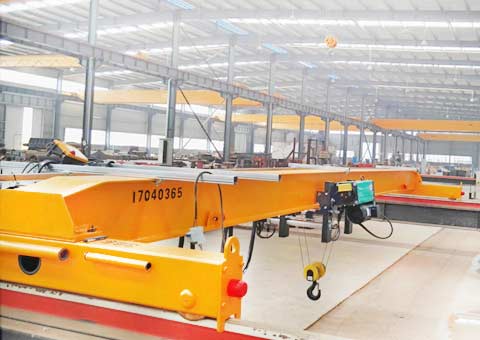
Single girder bridge cranes are characterized by their single horizontal beam, offering cost-effective solutions for lifting operations within workshops. With load capacities ranging from lighter to medium loads, these cranes efficiently handle tasks such as assembly work, material transport, and maintenance activities in manufacturing plants and refineries. Their versatility and space-saving design make them ideal for smaller workshops.
Double Girder Bridge Cranes - Capacity and Applications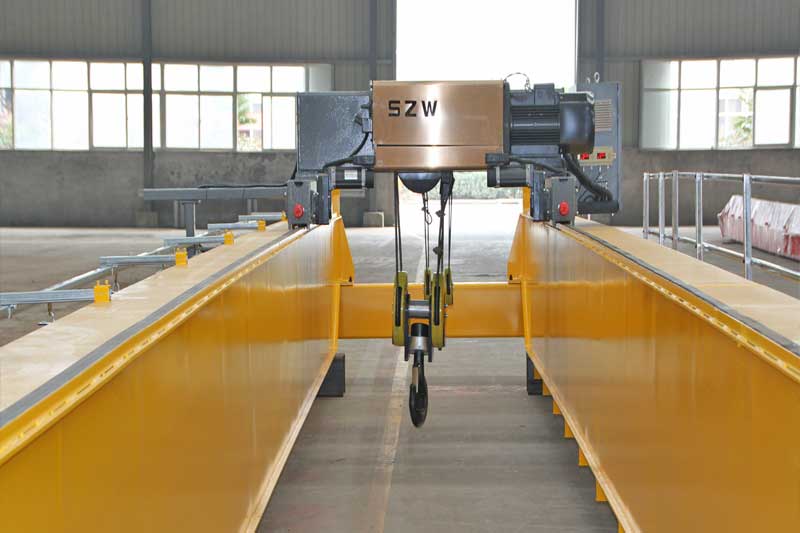
In contrast, double girder bridge cranes feature two parallel horizontal beams (girders) atop the runway, providing increased stability and capacity for heavier loads. With higher lifting capacities, these cranes are pivotal in handling substantial equipment, large machinery, and heavier components encountered in drilling equipment manufacturing plants and specialized equipment workshops.
Gantry Cranes
Semi-Gantry Cranes - Capacity and Applications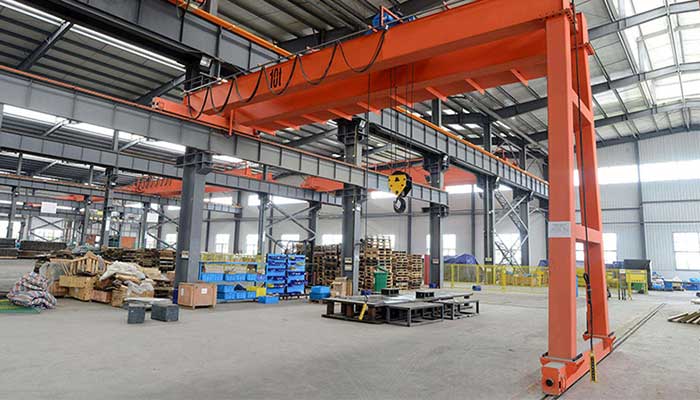
Semi-gantry cranes, designed with one end supported on a wall or structure and the other end traveling on a rail or ground-level runway, are adept at handling heavy loads with precision. They find applications in fabrication yards, assisting in the assembly of various components used in offshore platforms and pipeline manufacturing facilities.
Full-Gantry Cranes - Capacity and Applications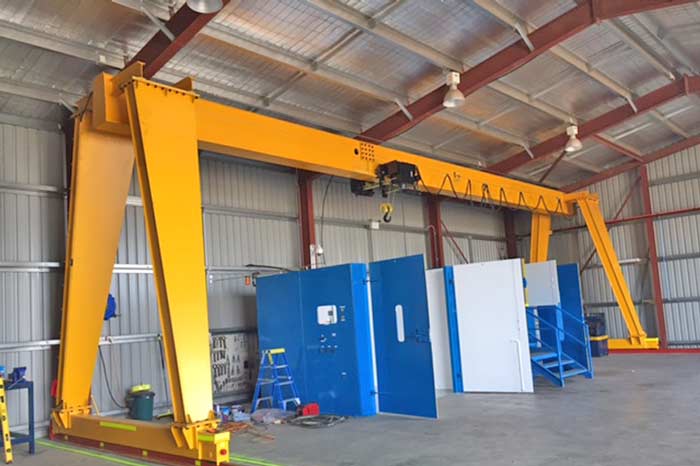
Full-gantry cranes operate on parallel rails, supporting heavy lifting operations across larger areas. These cranes are indispensable in offshore installations, aiding in the assembly and maneuvering of massive structures like drilling rigs and platform modules.
Jib Cranes
Wall-Mounted Jib Cranes - Capacity and Applications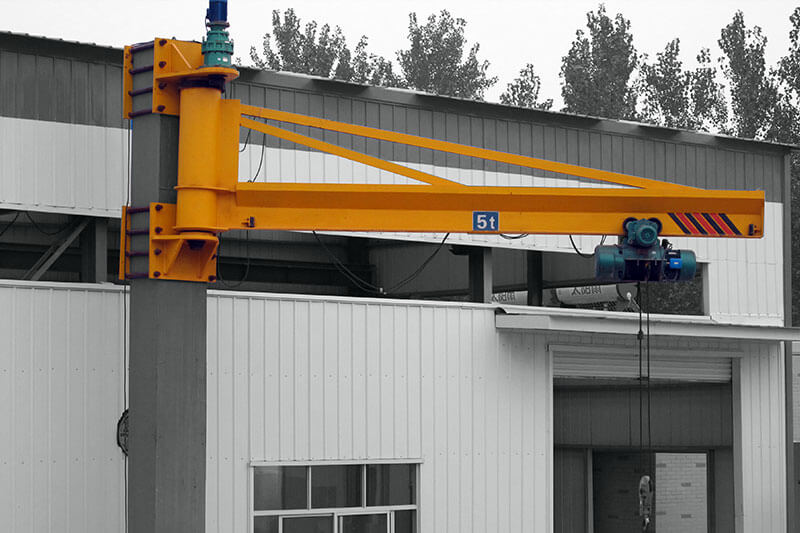
Wall-mounted jib cranes are fixed to the wall or column, offering 180-degree or full-circle rotation. They are utilized in confined spaces within refineries and manufacturing plants, effectively handling smaller loads and facilitating precise material positioning.
Free-Standing Jib Cranes - Capacity and Applications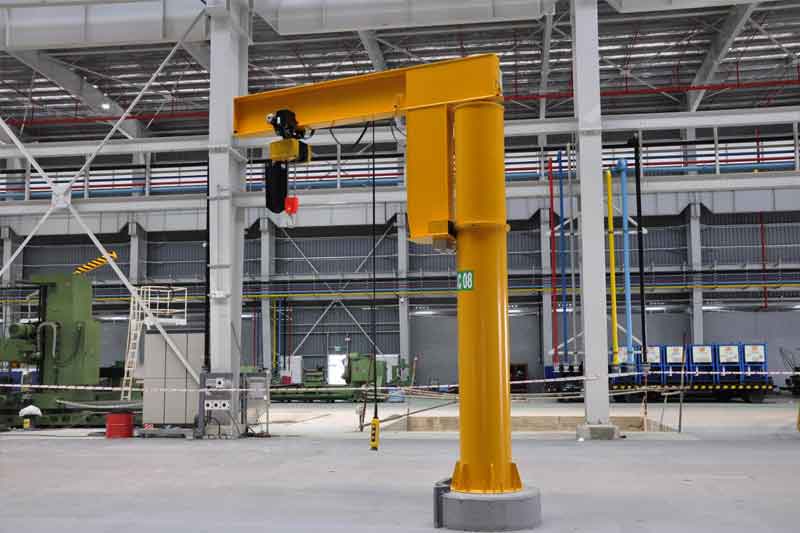
Free-standing jib cranes are self-supporting and do not require attachment to a building structure. With their ability to cover larger areas, they are employed in workshops for tasks involving moderate load handling and versatile maneuverability.
Crane Capacity and Applications in Oil and Gas Workshops
Understanding the diverse capacities and applications of overhead cranes within the oil and gas industry is instrumental in ensuring smooth and efficient operations across various workshop settings. Let's delve deeper into the specific capacities and their applications in these critical environments.
Light to Medium Capacity Cranes
Handling smaller equipment and components in manufacturing plants
Light to medium capacity overhead cranes, such as single girder bridge cranes, are indispensable in handling smaller equipment and components within manufacturing plants. These cranes enable precise movements and efficient assembly processes, contributing to the manufacturing of intricate components used in the oil and gas industry.
Maintenance tasks and assembly work in refineries
In refineries, where meticulous maintenance and assembly tasks are routine, light to medium capacity cranes play a vital role. These cranes facilitate maintenance activities by efficiently lifting and transporting components for repair or replacement, contributing to the continuous operation and upkeep of refinery equipment.
Medium to Heavy Capacity Cranes
Lifting and transporting heavy machinery in drilling equipment manufacturing
Medium to heavy capacity overhead cranes, such as double girder bridge cranes, are instrumental in handling heavy machinery within drilling equipment manufacturing facilities. These cranes enable the safe and efficient lifting and transportation of substantial drilling equipment components, ensuring seamless manufacturing processes.
Fabrication of pipeline sections in pipeline manufacturing facilities
In pipeline manufacturing facilities, where precision is crucial in fabricating pipeline sections, medium to heavy capacity cranes are utilized. These cranes support the fabrication process by maneuvering and positioning large and bulky pipeline components, contributing to the construction of sturdy and reliable pipelines.
Heavy-Duty Cranes
Assembly of offshore platforms in fabrication yards
Heavy-duty overhead cranes, including full-gantry cranes and derrick cranes, are vital in fabrication yards for assembling offshore platforms. These cranes are capable of handling massive modules and equipment, ensuring the safe and precise assembly of offshore structures critical to oil and gas operations.
Handling oversized equipment and components in specialized equipment manufacturing workshops
In specialized equipment manufacturing workshops, heavy-duty cranes are indispensable for handling oversized equipment and components. These cranes provide the necessary strength and reach to maneuver and position substantial specialized equipment components essential for various oil and gas applications.
Features and Benefits of Overhead Cranes in Workshop Applications
The utilization of overhead cranes within oil and gas workshop environments extends beyond their lifting capabilities. These cranes boast an array of features and benefits that enhance efficiency, precision, and safety in material handling and manufacturing processes.
Load Capacity Flexibility to Handle Various Workpiece Sizes
One of the primary advantages of overhead cranes is their load capacity flexibility. From lighter loads to heavy machinery and oversized components, these cranes are engineered with varying load capacities. This flexibility allows workshops to efficiently handle diverse workpiece sizes, optimizing productivity across different manufacturing and maintenance tasks.
Precision Controls for Accurate Positioning in Manufacturing Processes
Overhead cranes are equipped with precision controls that enable accurate positioning of materials and components. This level of control is indispensable in workshops where precision is crucial, such as during assembly, fabrication, or maintenance tasks. Operators can maneuver loads with precision, ensuring precise placement and alignment, thereby minimizing errors and enhancing overall productivity.
Safety Features to Ensure Secure Material Handling
Safety is paramount in oil and gas workshop environments, and overhead cranes are equipped with an array of safety features. These may include overload protection, emergency stop buttons, anti-collision systems, and redundant safety mechanisms. Such safety features mitigate risks, preventing accidents and ensuring secure material handling, safeguarding both personnel and assets.
Adaptability to Different Workshop Environments
The adaptability of overhead cranes to various workshop environments is another significant advantage. Whether operating in refineries, manufacturing plants, fabrication yards, or specialized equipment workshops, these cranes are designed to function efficiently across diverse settings. They are tailored to withstand harsh conditions, such as extreme temperatures or corrosive environments, ensuring reliable performance in challenging workshop environments.
The amalgamation of these features and benefits positions overhead cranes as indispensable assets within oil and gas workshops. Their versatility, precision, safety measures, and adaptability contribute significantly to optimizing material handling processes and overall operational efficiency.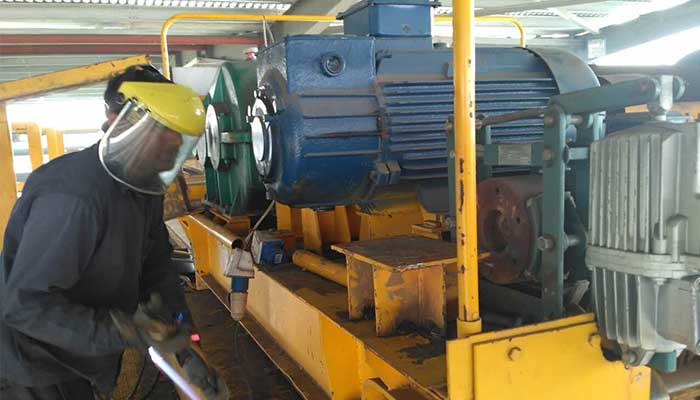
Crane Maintenance Strategies in Oil and Gas Workshops
Maintenance is pivotal in ensuring the continued reliability, safety, and optimal performance of overhead cranes within oil and gas workshop environments. Implementing comprehensive maintenance strategies is fundamental to sustaining their functionality and safety standards.
Proactive Maintenance Approaches for Crane Reliability
Proactive maintenance strategies focus on preventive measures aimed at identifying and addressing potential issues before they escalate. This approach involves routine inspections, lubrication of critical components, and timely replacement of worn-out parts. By adhering to a proactive maintenance schedule, workshops can minimize downtime, prevent breakdowns, and extend the operational lifespan of overhead cranes.
Predictive Maintenance Technologies for Enhanced Performance
Incorporating predictive maintenance technologies, such as condition monitoring and sensor-based systems, elevates maintenance practices to a more predictive and data-driven level. These technologies enable workshops to gather real-time data on crane performance, detecting anomalies and potential failures early on. Predictive maintenance allows for timely interventions and targeted repairs, optimizing crane performance and reducing the likelihood of unexpected breakdowns.
Importance of Regular Inspections and Safety Checks
Regular inspections and safety checks are integral elements of crane maintenance protocols. Conducting comprehensive inspections involves examining critical components, electrical systems, structural integrity, and safety features. By adhering to stringent inspection routines and safety checks, workshops ensure compliance with safety standards, identify potential hazards, and address safety concerns promptly.
Implementing a structured maintenance regimen, encompassing proactive, predictive, and safety-focused approaches, is paramount in sustaining the operational efficiency and safety standards of overhead cranes within oil and gas workshop environments.
Adhering to these maintenance strategies not only upholds crane reliability but also fosters a safe working environment for personnel while optimizing operational uptime and productivity.
Training and Certification for Crane Operators in Oil and Gas Facilities
The proficiency and competence of crane operators play a pivotal role in ensuring safe and efficient operations within oil and gas workshop environments. Adequate training, certification, and continuous education are indispensable elements in fostering a culture of safety and expertise among crane operators.
Essential Training Requirements for Crane Operators
Comprehensive training programs are essential for crane operators to acquire the necessary skills and knowledge for proficient crane operation. These programs encompass theoretical understanding, practical training on crane controls, load handling techniques, safety protocols, and hazard identification. Rigorous training ensures that operators are equipped to handle the complexities and challenges inherent in operating overhead cranes within workshop settings.
Importance of Operator Certification and Ongoing Education
Obtaining certification and licenses validates the competency of crane operators and ensures adherence to industry standards and regulations. Certification programs assess operators' skills and knowledge, validating their ability to operate cranes safely and efficiently. Furthermore, ongoing education and refresher courses are crucial in keeping operators updated with the latest technologies, safety practices, and operational procedures, enabling them to adapt to evolving industry standards.
Ensuring Safe Crane Operations in Workshop Environments
Safe crane operations hinge upon the collective responsibility of the entire workforce and adherence to stringent safety protocols. Besides the operators' proficiency, workshops must establish a safety culture that emphasizes adherence to safety procedures, effective communication, hazard recognition, and proactive risk mitigation strategies. Regular safety briefings, hazard assessments, and collaborative efforts ensure a safe working environment conducive to efficient crane operations.
By prioritizing comprehensive training, certification, and fostering a safety-centric culture, oil and gas workshops can ensure the safe and proficient operation of overhead cranes. These measures not only safeguard personnel and assets but also contribute significantly to the overall efficiency and productivity of workshop operations.
Conclusion : Get You Custom Overhead Crane forYour Needs.
As indispensable assets within oil and gas workshop environments, overhead cranes stand as pillars supporting seamless operations, ensuring efficiency, and prioritizing safety across diverse applications.
The diverse range of overhead crane types, from single girder bridge cranes to heavy-duty derrick cranes, offers varied capacities tailored to specific tasks within workshops. These cranes exhibit flexibility, providing solutions for handling lighter to heavier loads, contributing to the versatility of workshop operations.
Overhead cranes play a pivotal role in diverse workshop applications, facilitating material handling, assembly, fabrication, and maintenance tasks across the oil and gas industry. From refining processes to drilling equipment manufacturing and offshore platform assembly, their adaptability and precision enable efficient operations across varied workshop environments.
The paramount importance of safety, efficiency, and optimization in oil and gas facilities cannot be overstated. Overhead cranes contribute significantly to these aspects by ensuring safe material handling, precision in operations, and the optimization of workflows within workshops. Prioritizing safety measures, maintaining crane reliability, and investing in operator proficiency are key factors in fostering a culture of safety and efficiency within these critical environments.
In conclusion, overhead cranes are not merely lifting devices but integral components that uphold safety standards, enhance operational efficiency, and contribute to the overall success of oil and gas workshop operations. Their versatility, reliability, and adaptability make them indispensable assets in ensuring seamless operations and contributing to the success of the oil and gas industry.




